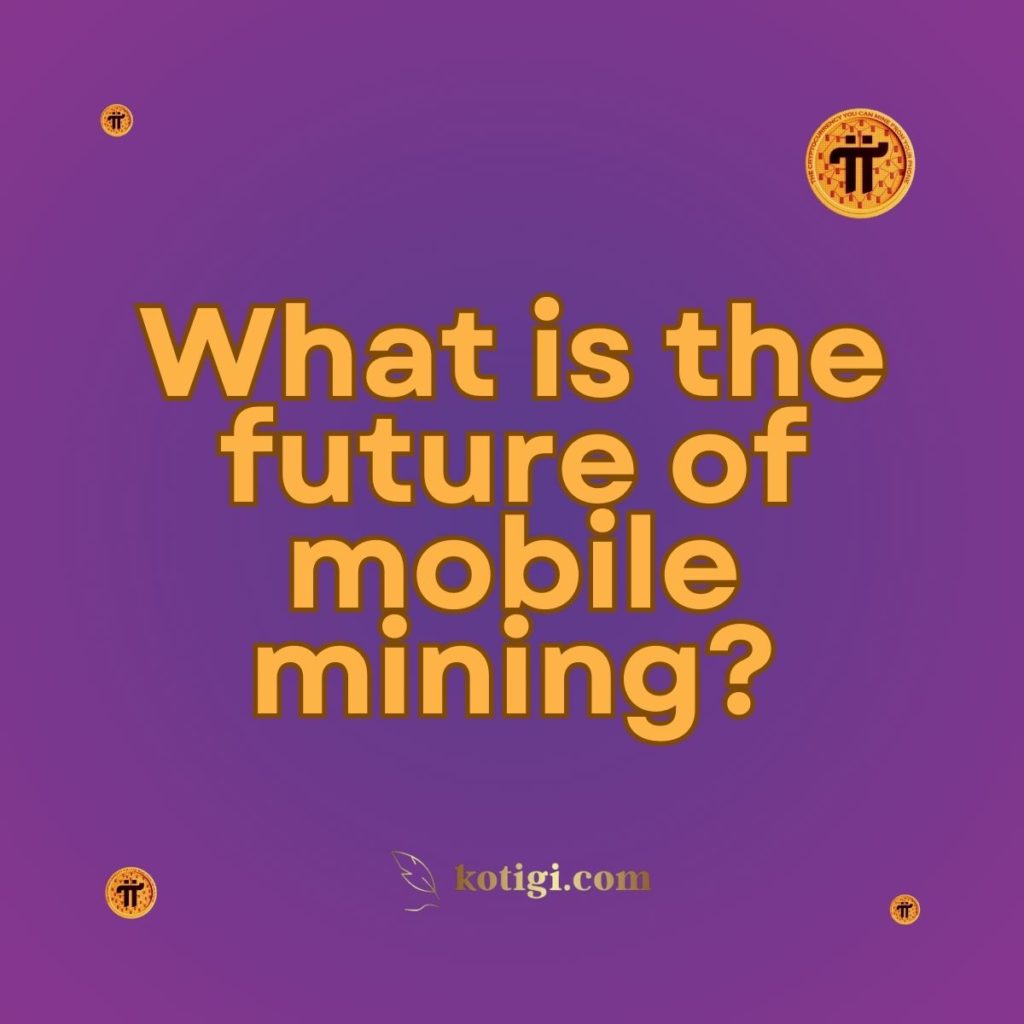
What is the future of mobile mining?
Mobile mining is an emerging trend in the cryptocurrency world, allowing users to mine digital assets using their smartphones. Unlike traditional mining, which requires substantial computational power and energy consumption, mobile mining is designed to be more accessible and energy-efficient. As mobile mining platforms like Pi Network gain popularity, it’s worth exploring what the future holds for this innovative approach to cryptocurrency mining.
1. Increased Accessibility and Participation
One of the most significant advantages of mobile mining is its accessibility. Traditional cryptocurrency mining requires expensive hardware and significant technical knowledge, which limits participation to those with substantial resources. In contrast, mobile mining can be done by anyone with a smartphone, democratizing access to cryptocurrency. As more mobile mining apps are developed, we can expect to see a broader and more diverse group of participants entering the cryptocurrency space, further driving adoption and innovation.
2. Energy Efficiency and Environmental Impact
Traditional cryptocurrency mining has been criticized for its high energy consumption and environmental impact. Mobile mining addresses these concerns by leveraging the low power requirements of smartphones. As the demand for sustainable practices grows, mobile mining’s energy-efficient approach could become more attractive. Additionally, future advancements in smartphone technology, such as improved battery life and processing power, could make mobile mining even more efficient and environmentally friendly.
3. Evolution of Mining Algorithms
Mobile mining relies on algorithms that are designed to work efficiently on low-power devices. As the technology evolves, we may see the development of new algorithms specifically optimized for mobile mining. These algorithms could enhance the security, speed, and efficiency of mobile mining, making it a more viable option for a wider range of cryptocurrencies. This evolution could also lead to the creation of entirely new cryptocurrencies that are specifically designed for mobile mining, further expanding the ecosystem.
4. Integration with Other Technologies
The future of mobile mining may involve integration with other emerging technologies, such as 5G, blockchain, and the Internet of Things (IoT). For example, the increased speed and connectivity provided by 5G networks could enhance the efficiency of mobile mining, enabling faster transaction processing and data synchronization. Additionally, integrating mobile mining with IoT devices could create new use cases, such as mining rewards for data sharing or device connectivity. This could open up new revenue streams for both individuals and businesses.
5. Regulation and Compliance
As mobile mining becomes more popular, it is likely to attract increased attention from regulators. Ensuring compliance with local and international laws will be crucial for the sustainability of mobile mining platforms. Future regulations may address issues such as user data privacy, anti-money laundering (AML) compliance, and the environmental impact of mining. Mobile mining platforms that proactively engage with regulators and implement robust compliance measures will be better positioned to thrive in the long term.
6. User Incentives and Gamification
To encourage participation and engagement, mobile mining platforms may increasingly adopt gamification and reward-based models. These strategies can make the mining process more interactive and enjoyable, attracting users who might not otherwise be interested in cryptocurrency. For example, users could earn additional rewards for completing specific tasks, achieving milestones, or referring new participants. Gamification could also help educate users about cryptocurrency and blockchain technology, further driving adoption.
7. Decentralization and Security
Mobile mining contributes to the decentralization of cryptocurrency networks by allowing a broader base of users to participate in the mining process. This increased decentralization can enhance the security and resilience of blockchain networks, making them less vulnerable to attacks or manipulation. As mobile mining platforms continue to evolve, they may implement advanced security features, such as multi-factor authentication and encryption, to protect users’ assets and data.
8. Market Expansion and New Opportunities
As mobile mining grows in popularity, it is likely to drive the expansion of the cryptocurrency market into new regions and demographics. In areas with limited access to traditional banking services, mobile mining could provide a new avenue for financial inclusion, allowing individuals to participate in the global economy. Furthermore, the growth of mobile mining could lead to new business opportunities, such as the development of mobile-friendly financial services, decentralized applications (dApps), and peer-to-peer marketplaces.
Conclusion
The future of mobile mining is promising, with the potential to revolutionize the way cryptocurrencies are mined and used. As technology advances and adoption increases, mobile mining could become a mainstream method for earning and transacting digital assets. Its accessibility, energy efficiency, and potential for integration with other technologies make it an attractive option for both new and experienced users in the cryptocurrency space. While challenges such as regulation and security must be addressed, the continued evolution of mobile mining could play a significant role in shaping the future of digital finance.




